The document outlines the principles and practices of project-based learning (PBL), emphasizing its benefits for student engagement and critical thinking. It discusses the planning and implementation steps for PBL, including setting objectives, assessing progress, and refining projects based on feedback. Additionally, it introduces specific models like the ARCS and TARGET models to enhance motivation and learning outcomes in the classroom.
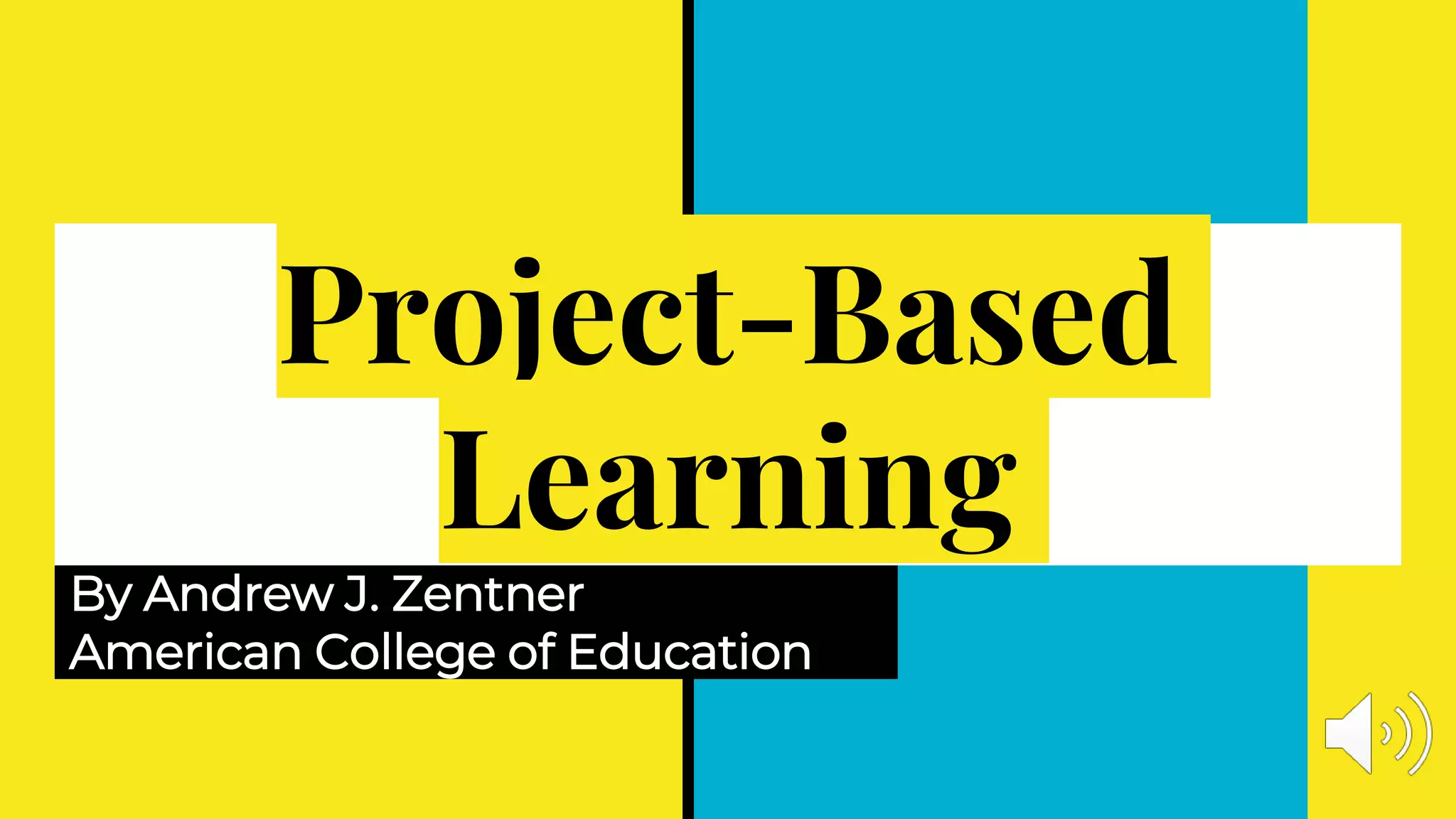
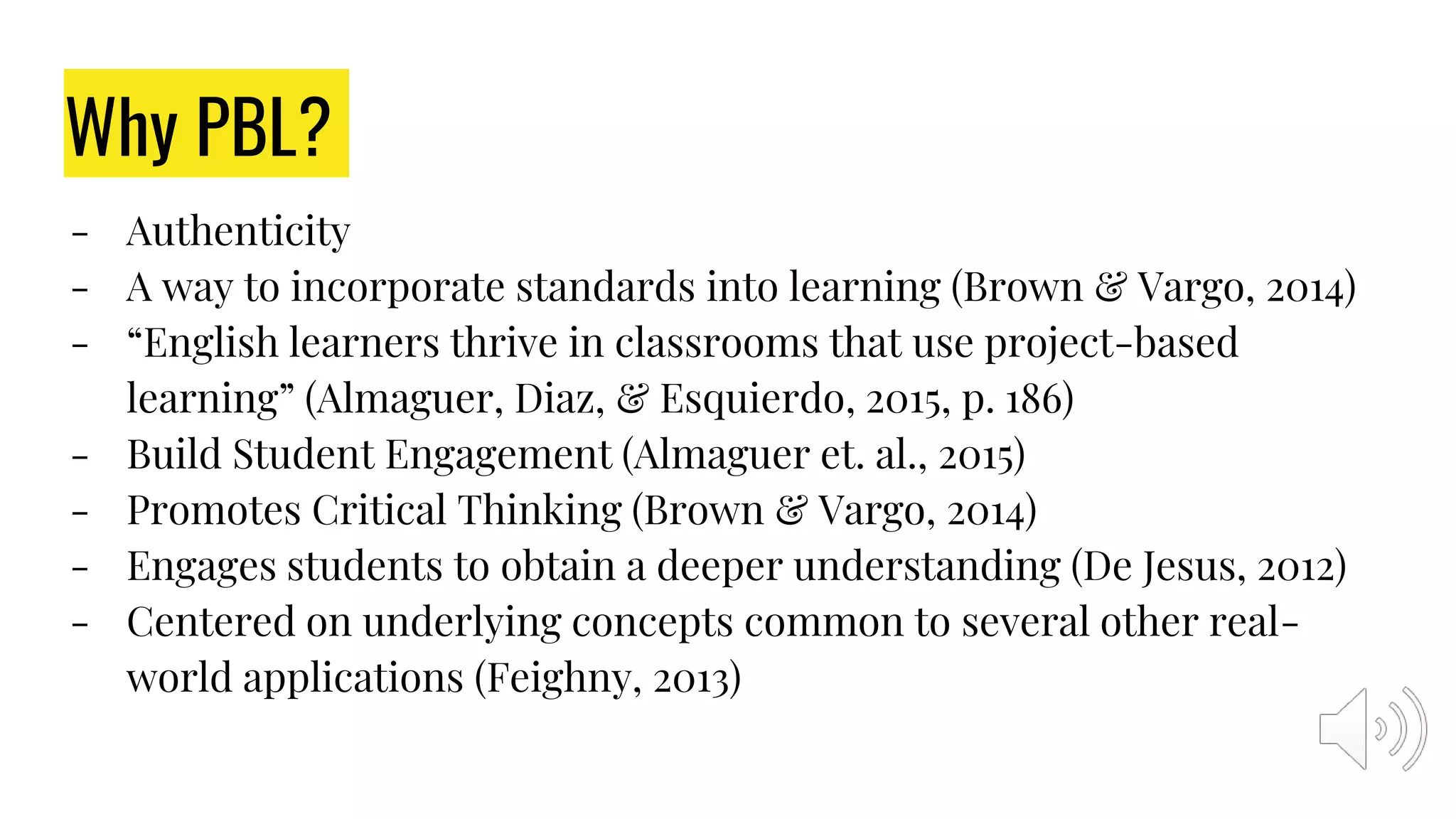

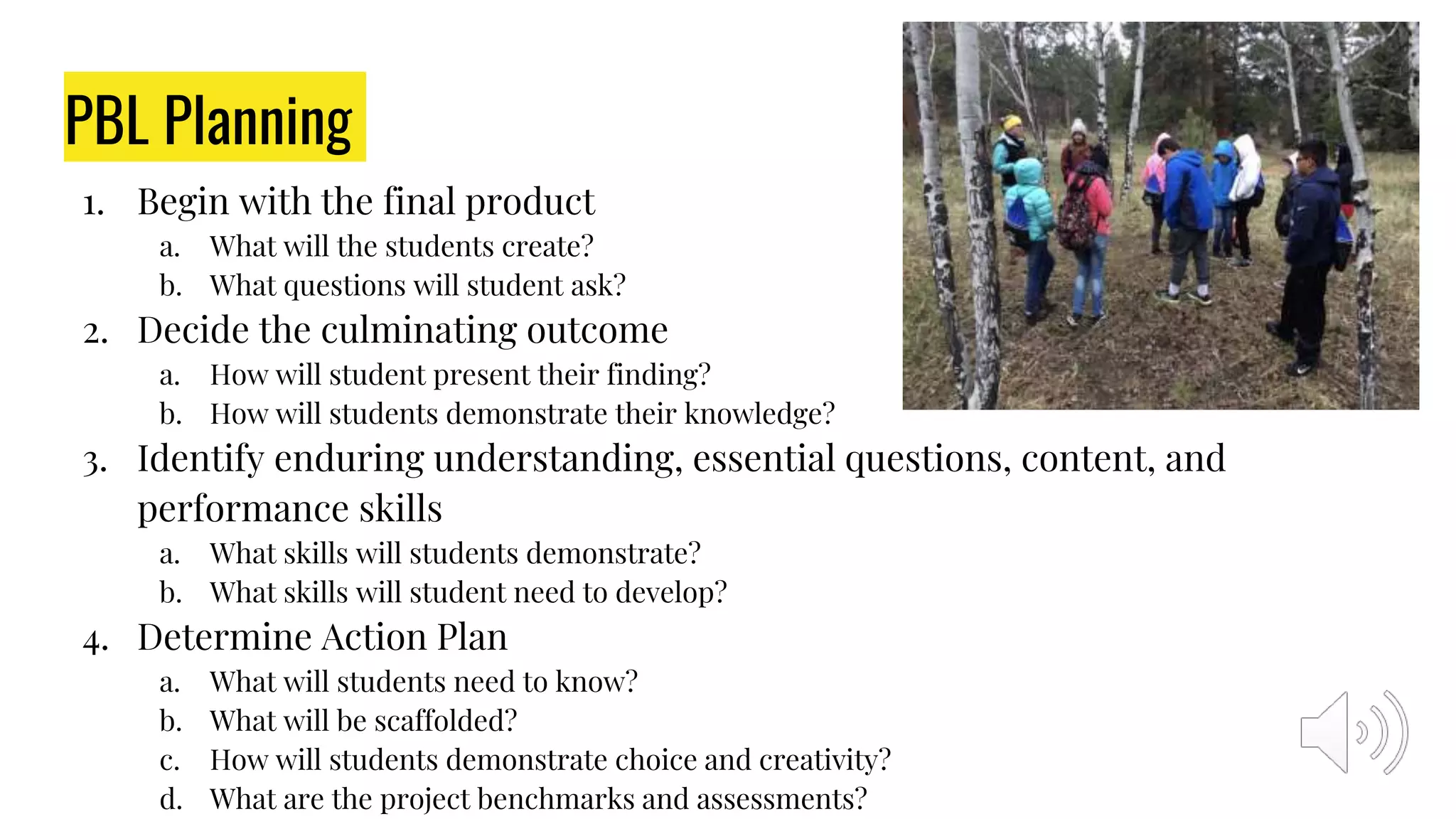
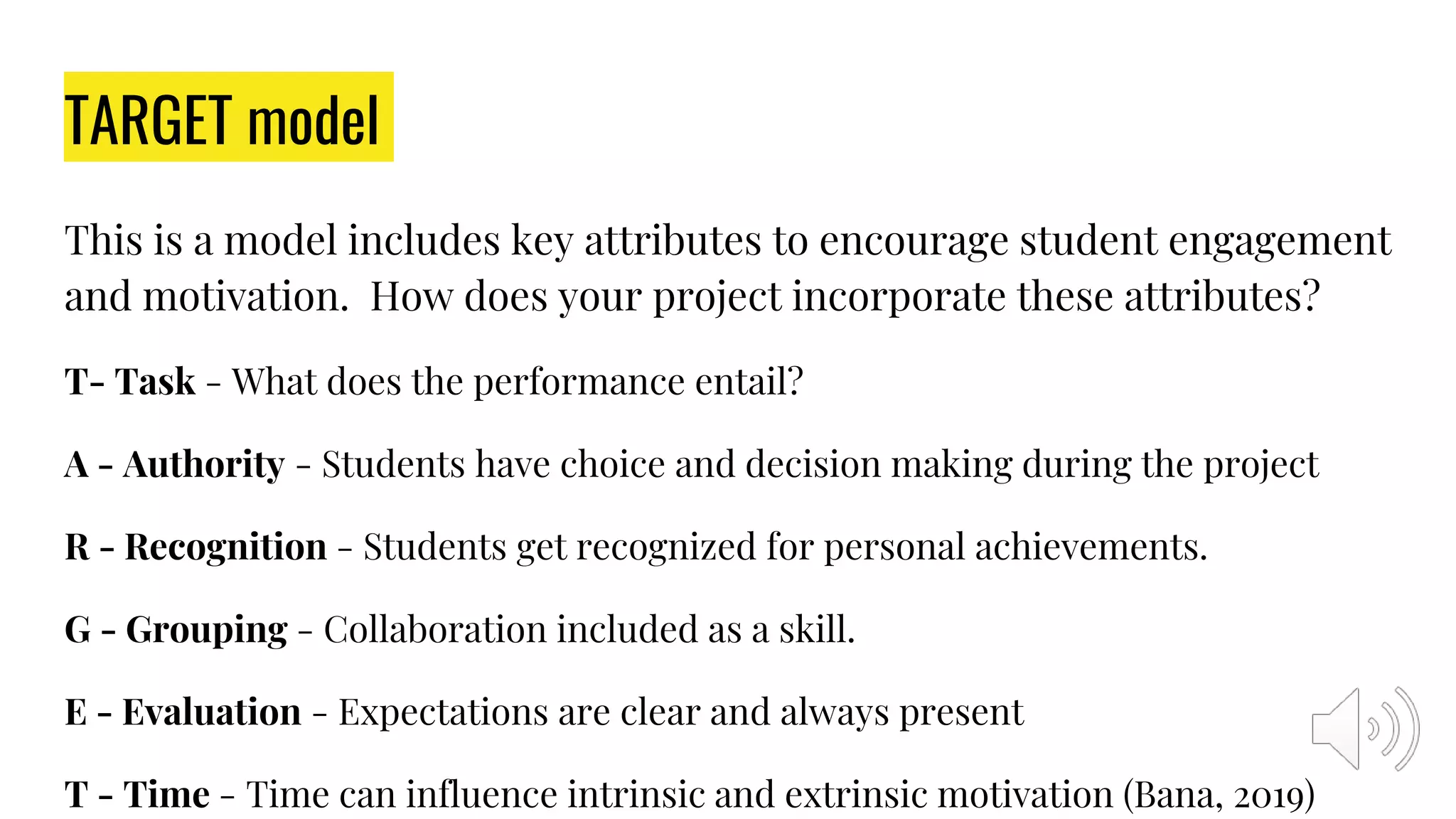

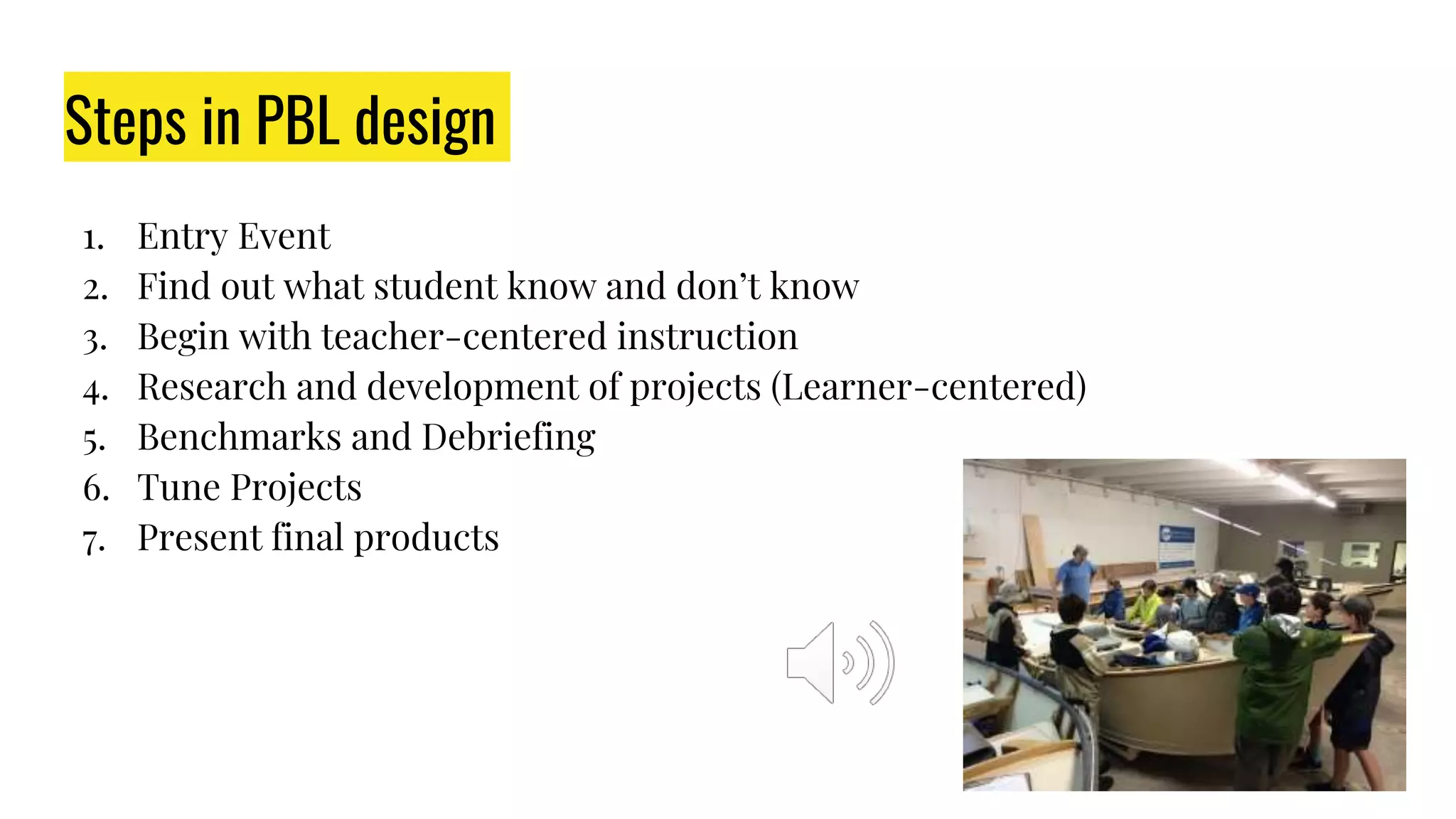

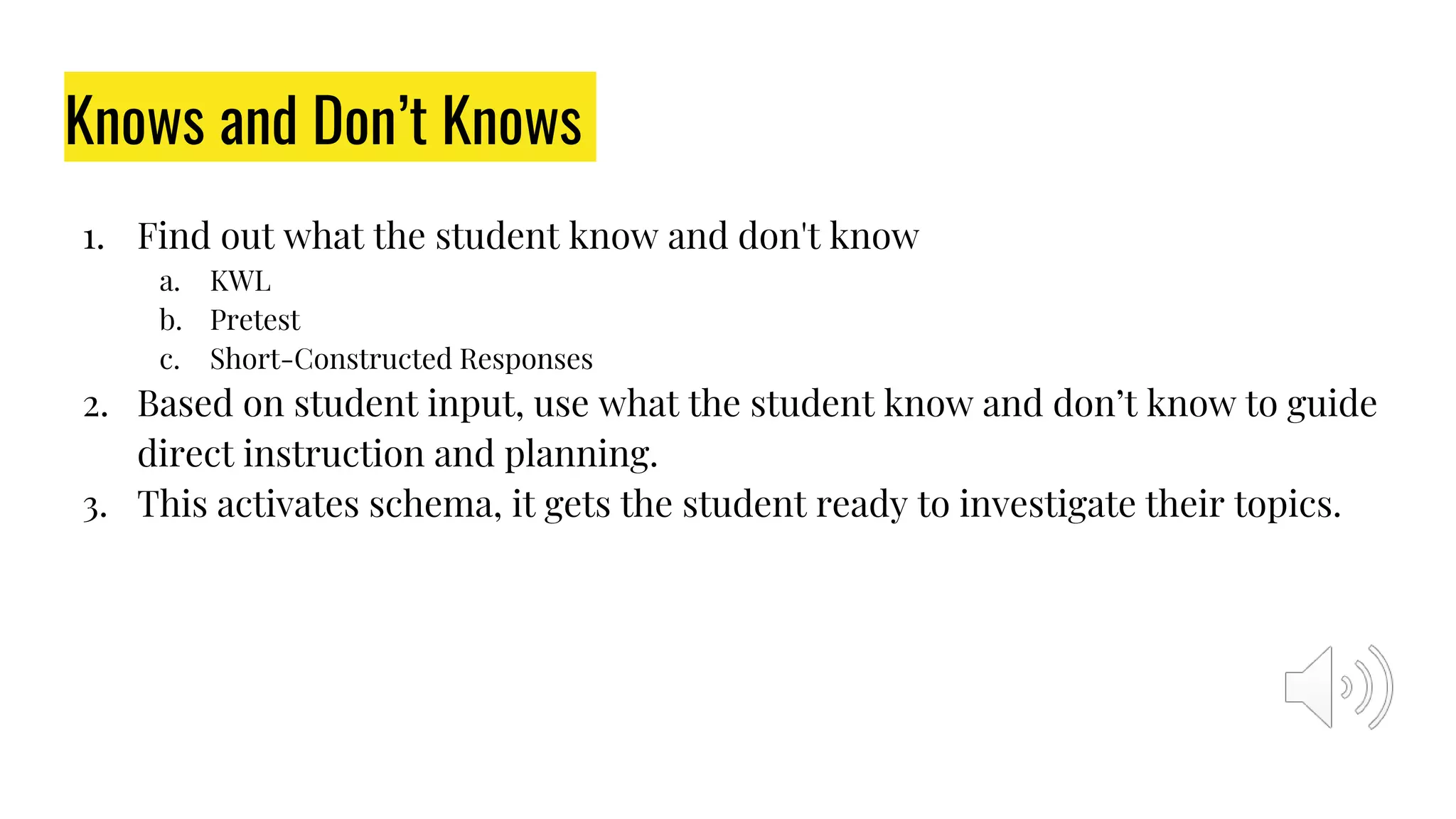

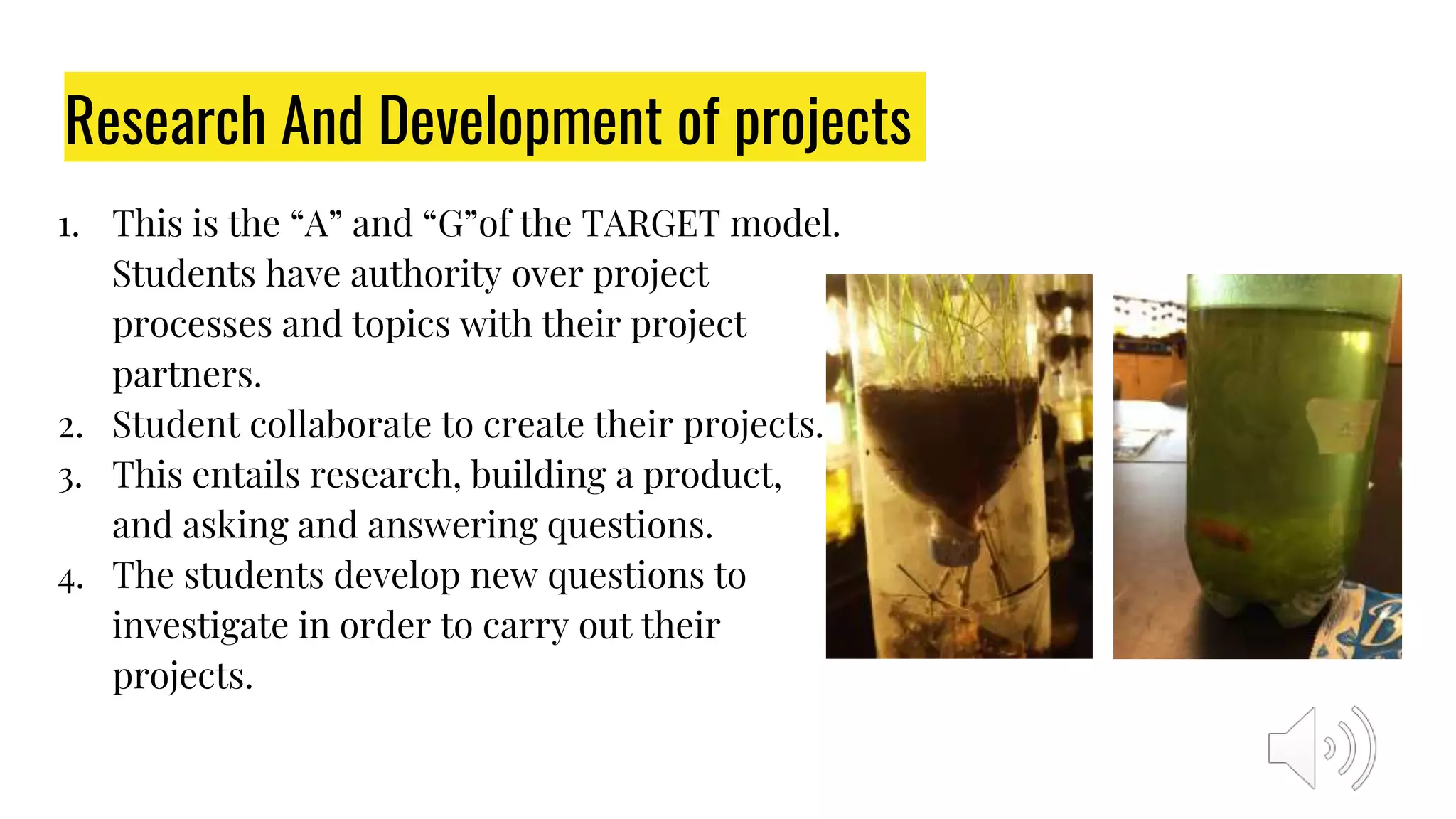

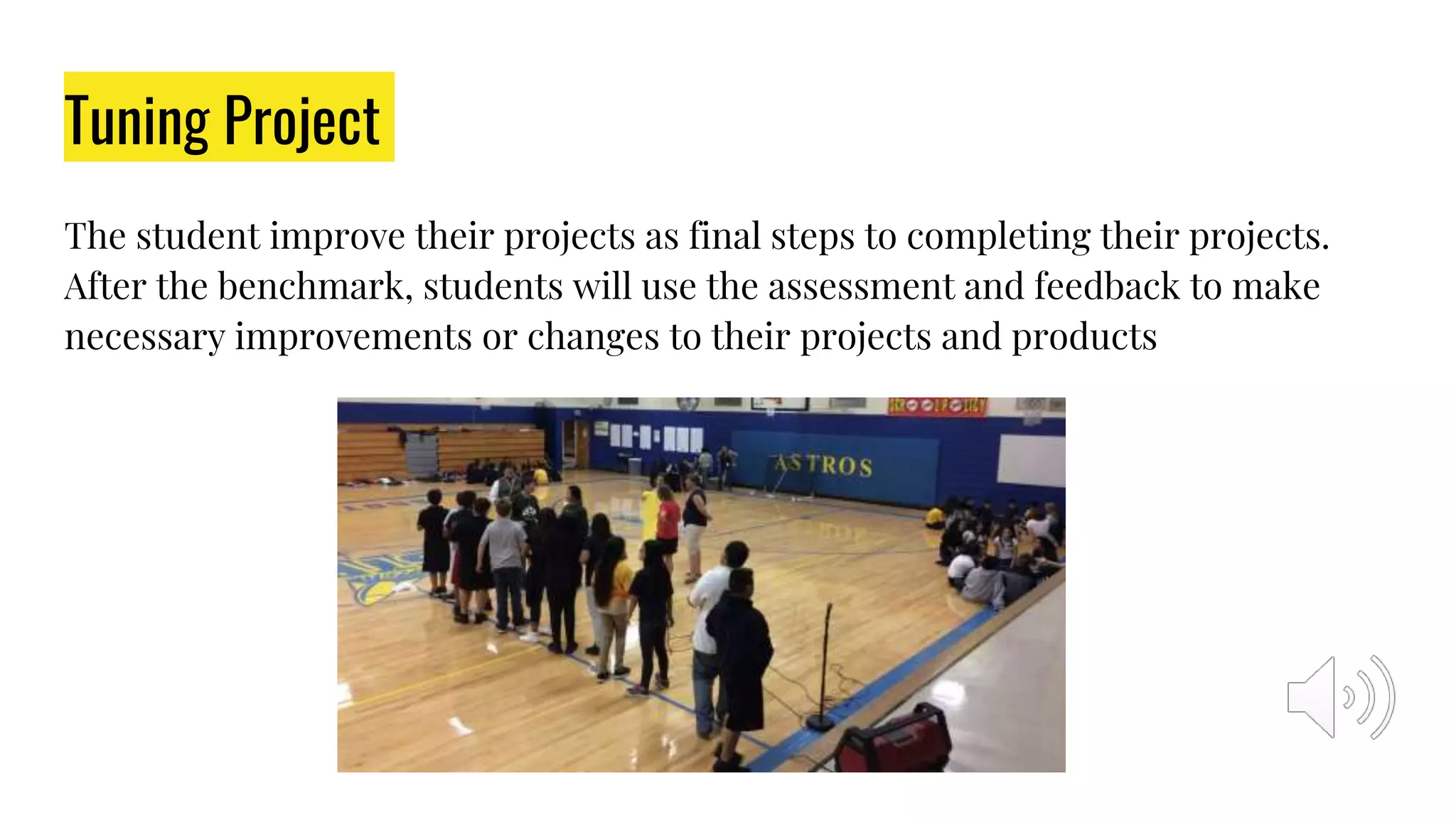



![References
Almaguer, I., Diaz, Z., & Esquierdo, J. J. (2015). Project-Based Learning: Innovative Pedagogy for 21st-Century English Learners.
Teacher Education & Practice, 28(1), 177–189.
Auerbach, A. (2012). Teaching diversity: Using a multifaceted approach to engage students. PS: Political Science and Politics, 45(3),
516-520.
Bana, J. (Course Lecturer) (2019). Self-Regulated Learning. Module 3 (Video) American College of Education. Retrieved from
http://ace.edu
Brown, B. and Vargo, M. (2014). Getting to the core: how early implementers are approaching the Common Core in California. Policy
Analysis for California Education.
De Jesus, O. N. (2012). Differentiated instruction: Can differentiated instruction provide success for all learners? National Teacher
Education Journal, 5(3), 5-11. Retrieved by
https://www.researchgate.net/publication/265047853_Differentiated_Instruction_Adjusting_to_the_Needs_of_All_Learners/download
Feighny, J. (Course Lecturer). (2013). Engaging Diversity in the Science Classroom Part 4: Next Generation Science Standards:
Module 2 [Video]. American College of Education. Retrieved from http://ace.edu](https://image.slidesharecdn.com/originalcontribution-project-basedlearning-190915184316/75/Project-Based-Learning-17-2048.jpg)